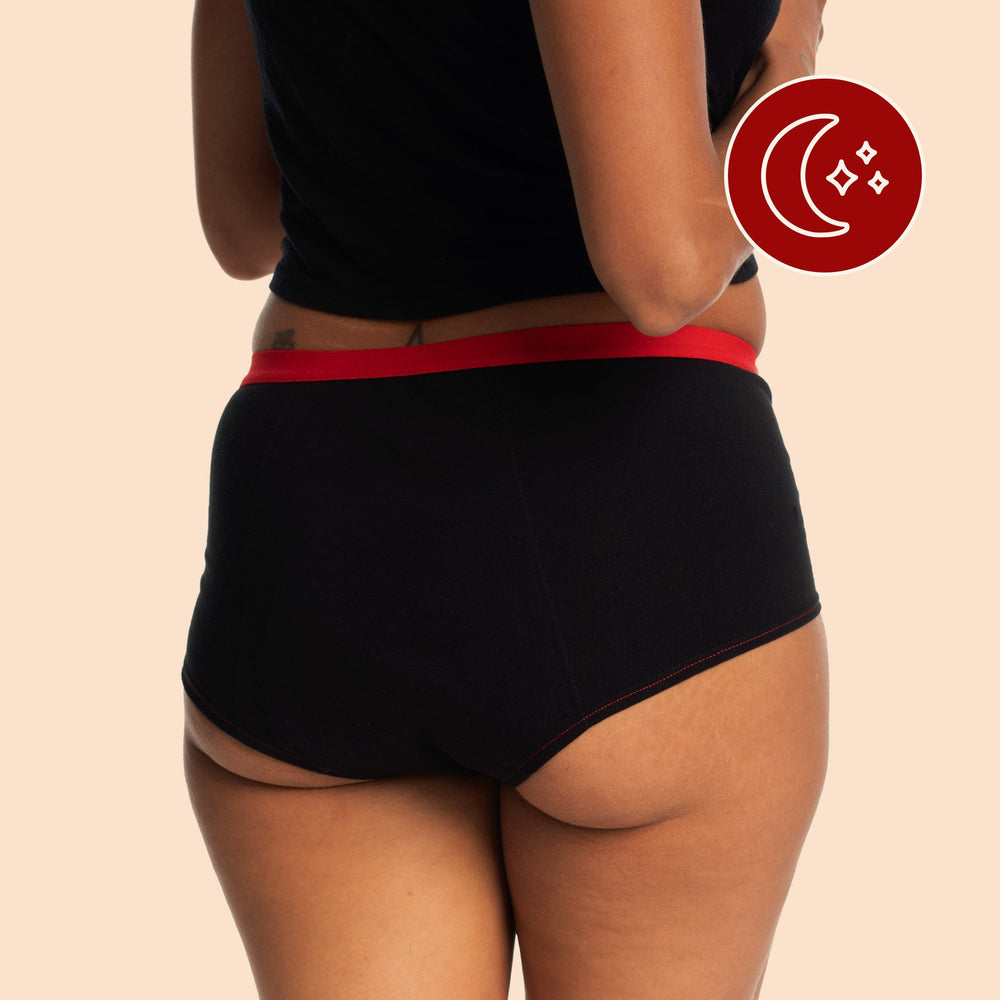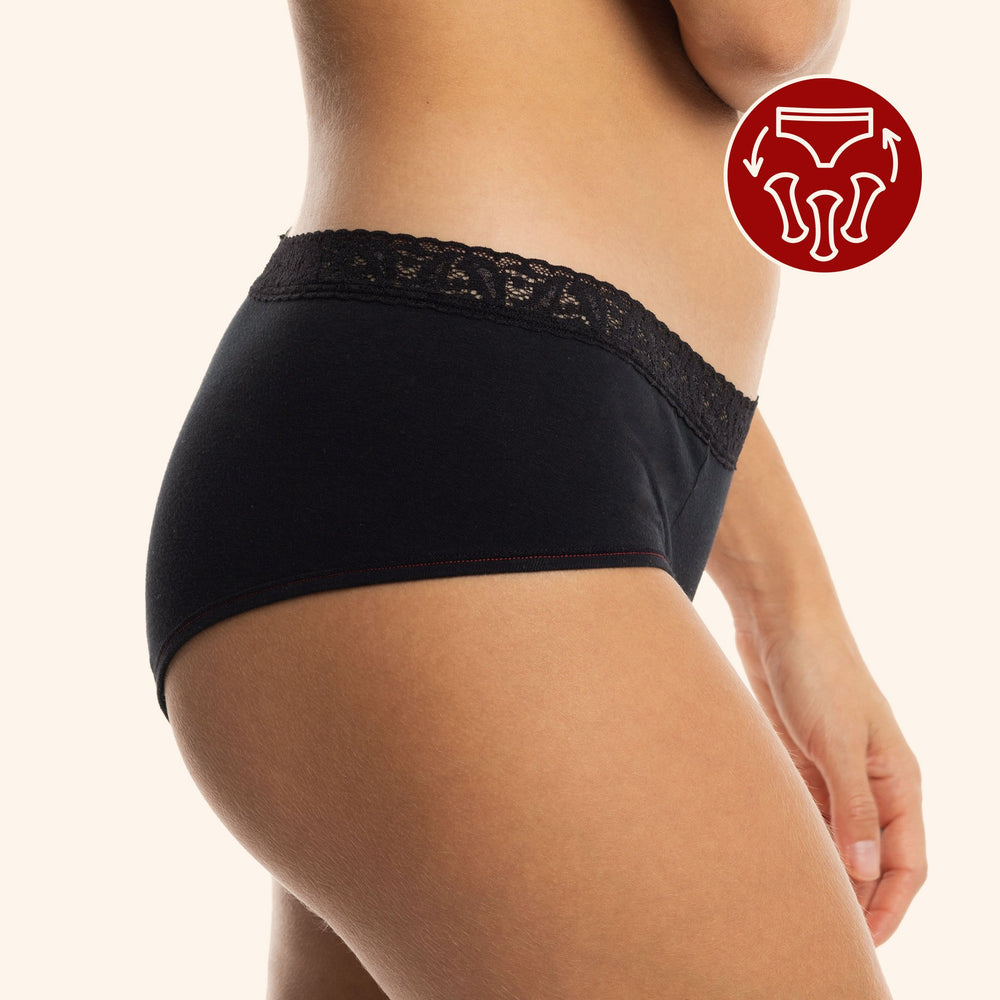The terms "women" and "men" are used to to make less serious, referring respectively to all people with a so-called female body and all people with a so-called male body, of all gender identities.
Menstrual leave, periodic leave, or period leave, as it’s sometimes called in French, has just been adopted in Spain.
Last February, the Spanish government voted for a bill allowing menstruating people who suffer from painful periods to go on leave. Spain is the first country in Europe to legislate this kind of leave, but it’s more popular in Asia.
Menstrual leave in Spain

In Spain’s case, the number of days a menstruating person can be granted isn’t specified in the official legislation, but the draft bill indicated a person could take 3 days (or 5 in the case of acute symptoms). A note from a doctor is required,. and time off is for dealing with “incapacitating menstruation” related, for example, to conditions like endometriosis or polycystic ovarian syndrome. Companies are compensated through the country’s social security system.
However, this isn’t the only way things can be done. Menstrual leave is defined and enforced differently everywhere it’s been adopted, sometimes paid and sometimes not, sometimes for a set number of days and sometimes not, sometimes counted year round and sometimes counted monthly (see Menstrual leave around the world).
Why is periodic leave important?
The idea of menstrual leave has been around for a long time in both Europe and North America. Whatever form it takes, it’s seen by the majority as a feminist measure that opens up the discussion of menstruation, still a very taboo subject, and recognizes the pain and inconvenience of the menstrual cycle in the current work environment.
Period leave is in line with the pink tax (which refers to the higher prices of women's products relative to men’s, including razors, hair salon services, basic clothing items, and children’s toys) and the tampon tax or period tax (a popular term used to denounce the fact that menstrual products aren’t exempt from taxes like other products considered essential).
The obligation of menstruating people to work despite the sometimes acute symptoms of menstruation or to use sick days when they’re in too much pain to work is frequently decried as a disadvantage imposed by a system designed for non-menstruating people.

Menstrual leave is not unanimously supported
Obviously, menstrual leave is far from unanimously supported. In Spain, it was adopted following a fairly close vote (185 in favour, 154 against, and 3 abstentions), and it’s been heavily criticized since.
A sexist measure for women...
Some people believe that menstrual leave does nothing to help women in the workplace and, on the contrary, could harm them in hiring processes or reinforce stereotypes about menstruation (for example, menstruating people are unemployable). These critics call menstrual leave a form of “benevolent sexism.”
In a 2021 Canadian Press article, Sarah Kaplan, professor and director of the Institute for Gender and Economics at the University of Toronto, said: Any policy that becomes gendered in our society is devalued, and as a result, the people who benefit from that policy are seen as having lower status, lower value, and less commitment to the organization. The risk is that it serves to further marginalize people who have their period. . . .t could reinforce some status hierarchies based on gender.”
Other critics of the measure go further: in addition to the “threat” of maternity leave that employers deal with, menstruating employees could now also be absent from the workplace for a few days every month.
Many articles also contain such enormities as: women are statistically more involved in child and household responsibilities, resulting in shorter days or more frequent absences from the workplace to deal with emergencies and family care than men. Which would make women . . .less reliable and less dedicated employees. OMG. If, in addition, they can take time off work to deal with their pain, well, employers would have every reason to discriminate against them in a hiring process.
A sexist measure for men...
Some people who disagree with the measure also claim that it’s unfair to men, who, when suffering from a pathology related to their own reproductive system, don’t get similar benefits.
The eternal debate: Equality or equity

These thoughts bring us back to the difference between equality and equity. According to The Canadian Encyclopedia, “Gender equality is treating everyone the same, regardless of gender, while with gender equity, people of different genders are treated differently based on their specific needs.”
In short, at Mme L'Ovary, we believe that menstrual leave puts menstruating people on the same playing field as others by allowing them to:
Not have to use their sick leave or vacation time to manage painful periods
Take time off work when pain is disabling, allowing for better job performance than if they were forced to work through pain or pain medication
As for the social adoption of such a measure, well, looking into it even a little bit shows just how complicated it is.
Is this really the right solution?
We agree that it’s not a magic solution. In our North American society, where menstrual pain is still normalized, even trivialized, it’s essential that periodic leave be part of a more comprehensive solution for menstrual well-being (including education in elementary schools, unlike our Floridian neighbours).
Requesting menstrual leave: Easy or not?
While the law allows for menstrual leave, the right to take advantage of it must be exercised. In corporate cultures that are open about menstruation, this may be easy, but in other cases, people might feel uncomfortable asking for menstrual leave from a male manager for fear of being judged as difficult or underperforming compared to their colleagues.
According to Kaplan, the pandemic has shown us that many workers don’t even have access to paid sick leave.My priority would be to make sure that everyone has access to paid sick leave and can do with it what they need.”
But should menstruation really be treated as an illness? Another option would be to reform the leave system to allow everyone to take more personal days without having to explain themselves to a management team.
That would be nice.
The benefits of menstrual leave
Beyond the obvious benefits to menstruating people, employers have something to gain as well. It’s been proven time and time again that employee happiness and work atmosphere have a huge impact on worker productivity.
Several studies have shown that companies that adopt policies that reduce the number of hours worked per week or offer more scheduling flexibility are generally winners in terms of performance.
Plus, studies show that unlimited sick days for employees in the workplace result in fewer absences in the end.
Why should it be any different with menstrual leave?
People who feel respected and have the space to take care of themselves at work are likely to perform better the rest of the time.And it doesn’t stop there. The benefits society itself can enjoy from honouring and better understanding the menstrual cycle, appreciating its superpowers and recognizing its challenges, are immense for menstruating people and everyone else.
Menstrual leave around the world

Japan
In Japan, periodic leave dates back to 1947. Menstruating people get unpaid leave days in unlimited quantity, and a company can’t force an employee to work if they request this type of leave. Many companies even choose to pay for menstrual leave. However, less than 1% of Japan’s female population uses it.
Kaplan cites the Japanese policy as a cautionary tale: “It was introduced because they thought women were fragile or could lose their fertility if they worked during their period.”
In a work culture as demanding as Japan’s, it’s not surprising that so few women take advantage of the right to menstrual leave.
Indonesia
In Indonesia, as early as 1948, the government granted women 2 days of periodic leave per month, requiring those taking it to notify their managers in advance. In 2003, the law was changed to give employers the choice of offering 1 or 2 days off per month at the beginning of the cycle for painful periods, which resulted in an increase in the number of companies that simply didn’t offer it at all, despite the law.
South Korea
The law has been in effect since 1950 and provides 1 day of unpaid leave per month (although it was unpaid until 2004). For companies that choose to ignore the law, the fine is steep! About 20% of the Korean female population takes advantage of the leave.
Taiwan
Taiwan offers 1 day per month (and up to 3 per year). The days are counted as additional sick leave and are paid in the same way(i.e. at 50% of the salary).
Zambia
In Zambia, the only African country to adopt this measure, menstrual leave has been in effect since 2015. There, the law allows one extra day off per month for women with painful periods. The day is dubbed "Mother’s Day," and there’s no legal requirement to give advance notice or see a doctor to take advantage of it. In practice, however, many companies do require women to give advance notice, and some even refuse to offer the leave at all. But the unions, thankfully, make it easier for women to claim their right.
And elsewhere?
Other countries, such as China, have issued recommendations to offer menstruating people with a doctor’s note one or more days of leave in case of painful menstruation, but there’s no supporting legislation. Even in countries where there’s no law, some companies choose to offer periodic leave based on policies they design themselves..
That’s the case at Mme L'Ovary of course :)
Canadian menstrual leave: Coming soon?
More and more companies in Quebec are offering menstrual leave to their employees. But is there legislation in the works?? The idea is gaining ground with some political parties, but innovative ideas tend to come from parties that aren’t in power, like the Green Party.
So far, there are no plans for legislated periodic leave in Canada. Still, seeing what other countries are doing around the world can be inspiring. Let’s keep the discussion going!























